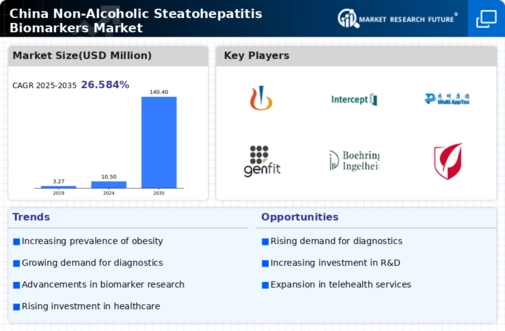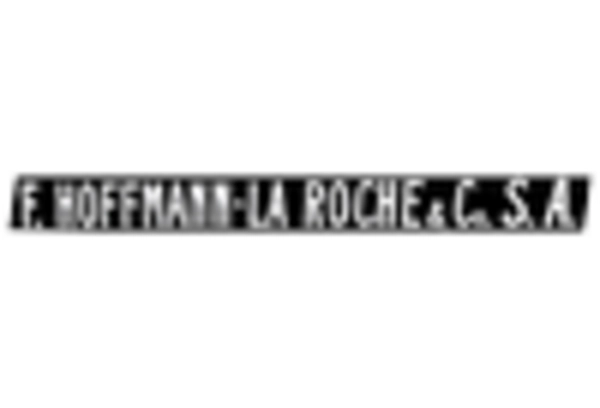Rising Obesity Rates
The alarming rise in obesity rates in China is a significant factor influencing the non alcoholic-steatohepatitis-biomarkers market. As obesity is a major risk factor for the development of NAFLD and NASH, the increasing prevalence of overweight and obese individuals is likely to correlate with a higher incidence of liver diseases. Recent statistics indicate that approximately 30% of the adult population in China is classified as overweight or obese, which may lead to a surge in demand for effective diagnostic biomarkers. This trend suggests that healthcare providers will increasingly seek reliable biomarkers to identify and monitor liver conditions associated with obesity, thereby driving growth in the non alcoholic-steatohepatitis-biomarkers market.
Growing Aging Population
The increasing aging population in China presents a notable driver for the non alcoholic-steatohepatitis-biomarkers market. As individuals age, the risk of developing liver diseases, including NASH, tends to rise. The demographic shift towards an older population is expected to lead to a higher prevalence of liver-related health issues, thereby increasing the demand for effective diagnostic biomarkers. Current projections suggest that by 2030, nearly 25% of the Chinese population will be over 60 years old. This demographic trend indicates a potential surge in the need for early detection and monitoring of liver diseases, positioning the non alcoholic-steatohepatitis-biomarkers market for substantial growth in the coming years.
Advancements in Biomarker Research
Ongoing advancements in biomarker research are poised to significantly impact the non alcoholic-steatohepatitis-biomarkers market. Researchers in China are exploring novel biomarkers that can enhance the accuracy of diagnosing NASH and its progression. The development of non-invasive diagnostic tools is particularly noteworthy, as they offer a less invasive alternative to liver biopsies. This innovation is likely to attract both healthcare providers and patients, as it reduces the risks associated with traditional diagnostic methods. Moreover, the potential for these biomarkers to provide insights into disease progression and treatment efficacy may further stimulate interest and investment in the non alcoholic-steatohepatitis-biomarkers market.
Government Initiatives and Funding
Government initiatives aimed at combating liver diseases are a vital driver for the non alcoholic-steatohepatitis-biomarkers market. The Chinese government has implemented various health policies and funding programs to address the rising burden of liver diseases. These initiatives may include grants for research, subsidies for diagnostic tools, and public health campaigns to promote awareness. Such support is likely to foster innovation in biomarker development and facilitate the introduction of new diagnostic solutions. As a result, the non alcoholic-steatohepatitis-biomarkers market may experience accelerated growth due to enhanced research capabilities and increased accessibility to advanced diagnostic technologies.
Increasing Awareness of Liver Health
The growing awareness of liver health among the Chinese population is a crucial driver for the non alcoholic-steatohepatitis-biomarkers market. Public health campaigns and educational initiatives have highlighted the risks associated with liver diseases, particularly non alcoholic fatty liver disease (NAFLD) and its progression to non alcoholic steatohepatitis (NASH). This heightened awareness is likely to lead to increased screening and diagnostic testing, thereby driving demand for biomarkers. As individuals become more informed about the implications of liver health, the market for non alcoholic-steatohepatitis-biomarkers is expected to expand. Furthermore, the Chinese government has recognized the importance of addressing liver diseases, which may result in increased funding for research and development in this area, further propelling the market forward.

















Leave a Comment